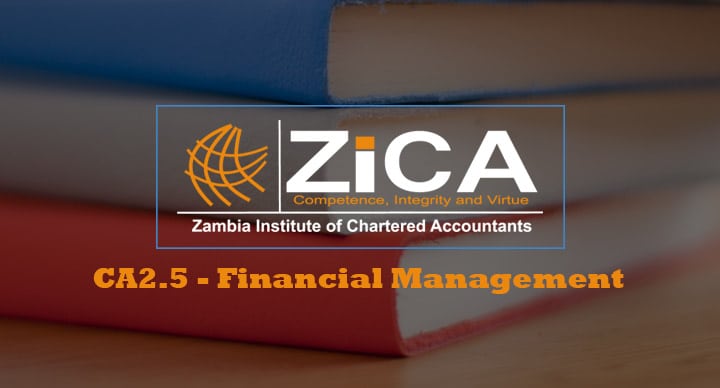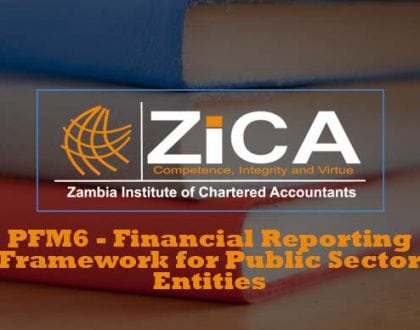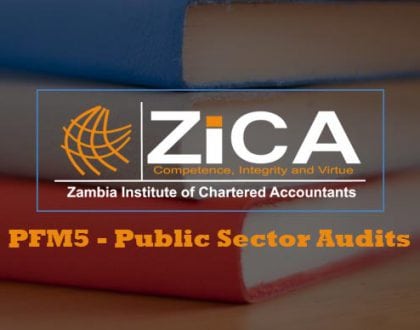D2-Financial Management
No access plans exist.

Course Features
Course Details
D2-FINANCIAL MANAGEMENT
This Paper introduces students to the framework of financial management, Financial planning and analysis, Sources of finance, Cost of capital, Capital investment appraisal, Valuation principles and group accounts, Working capital management and Public Finance.Objectives
On completion of this paper, the student should be able to:- Explain the nature, role and purpose of the financial management function,
- Analyse financial statements using accounting ratios and carry out assessments to predict corporate failure,
- Identify and evaluate alternative sources of business finance,
- Explain and calculate the cost of capital and the factors which affect it,
- Carry out effective investment appraisal,
- Discuss and apply principles of business and asset valuations and prepare consolidated financial statements for simple groups,
- Discuss, recommend and apply working capital management techniques,
- Discuss and apply the principles of public finance in tax practice.
Structure of the examination paper
There shall be a three hour examination consisting of four (4) compulsory questions of twentyfive (25) marks each. Candidates will be allowed fifteen minutes’ reading and planning time.Detailed syllabus
- UNIT 1 - FRAMEWORK OF FINANCIAL MANAGEMENT
- Element 1: The nature and purpose of financial management
- Element 2: Financial objectives and relationship with corporate strategy
- Element 3: Stakeholders and impact on corporate objectives
- Element 4: Financial and other objectives in not-for-profit organisations
- Element 5: Financial markets and the Efficient Market Hypothesis (EMH)
- UNIT 2 - FINANCIAL PLANNING AND ANALYSIS
- Element 1: Analysis of financial performance using accounting ratios
- Element 2: Forecasting financial statements
- Element 3: Predicting corporate failure
- UNIT 3 - SOURCES OF FINANCE
- Element 1: Sources of, and raising short-term finance
- Element 2: Sources of, and raising long-term finance
- Element 3: Internal sources of finance and dividend policy
- Element 4: Finance for Small and Medium-size Entities
- UNIT 4 - COST OF CAPITAL
- Element 1: Relative costs of various sources of finance
- Element 2: Estimating the cost of equity
- Element 3: Estimating the cost of debt and other capital instruments
- Element 4: Estimating the weighted cost of capital
- Element 5: Capital structure theories and practical considerations
- Element 6: Impact of cost of capital on investments
- UNIT 5 - CAPITAL INVESTMENT APPRAISAL
- Element 1: The nature of investment decisions and the appraisal process
- Element 2: Non-discounted cash flow techniques
- Element 3: Discounted cash flow (DCF) techniques
- Element 4: Allowing for inflation and taxation in DCF
- Element 5: Capital Replacement decisions
- UNIT 6 - VALUATION PRINCIPLES AND GROUP ACCOUNTS
- Element 1: Nature and purpose of the valuation of business and financial assets
- Element 2: Models for the valuation of shares
- Element 3: The valuation of debt and other financial assets
- Element 4: Principles of groups of companies
- Element 5: Preparation of consolidated financial statements including an associate Element 6: Dealing with intra group transactions
- UNIT 7 - WORKING CAPITAL MANAGEMENT
- Element 1: The nature, elements and importance of working capital
- Element 2: Management of inventories, accounts receivable, accounts payable and cash
- Element 3: Determining working capital needs and funding strategies
Reading material
- ZICA, Financial Management, 1st edition, Lusaka
- 2. ZICA, Corporate Financial Management, 1st edition, Lusaka
This course does not have any sections.





